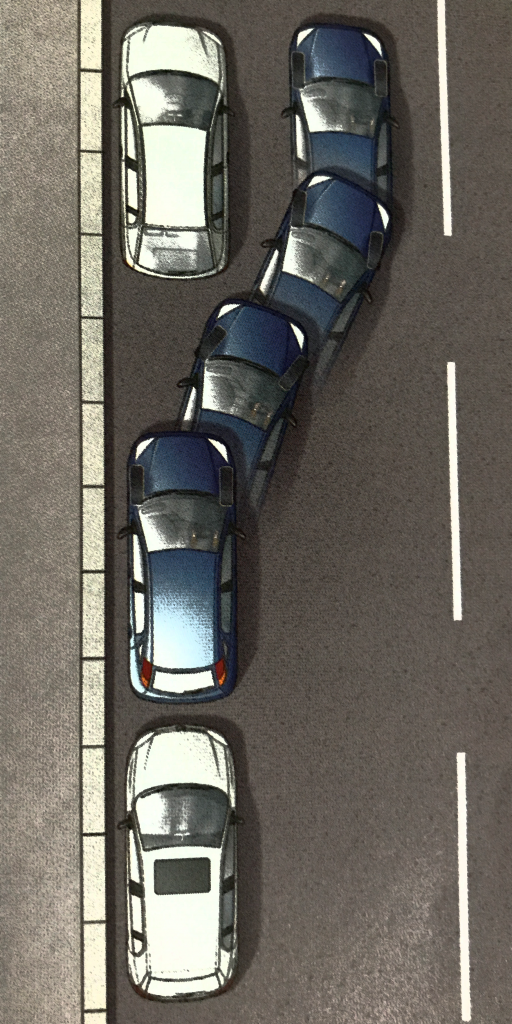Parallel Parking
A parallel parking exercise is one of the four manoeuvres that you could ask of a learner driver on their test. To learn parallel parking the easy way, you will need to be alert to the direction your car is moving. Learner drivers with their driving instructors spend a lot of time practising this exercise. The learners who come to me for professional advice on carrying out this exercise are all saying similar things, such as, “I can’t remember when to turn the wheel or which way. I can’t remember what markers to look for and at what angle should the car be?”
Some driving instructors turn a simple learn parallel parking operation into a complex geometric problem. The learner drivers themselves are no different. They expect it to be complicated. By expecting a complication to occur, it does become just that, complicated. I have successfully used it for students who have never completed this exercise before the following advice. “In front of you is a parked car; drive forward alongside the car. Stop, then reverse towards the kerb and park behind the car reasonably close to the kerb. Drive slowly whilst reversing using clutch control and observe all-around at all times.”
Parallel parking made easy
THERE IS NO SECRET to learn parallel parking. Look where you are going. Turn the steering wheel left to go left and right to go right. Turning the wheel when reversing is no different to forward driving. Left for left movement, right for right movement. I can hear you asking, “Yes, but how much do I turn, and when do I turn the wheel?” Answer “As much or as little as you need to achieve the result you are trying to get.”

A new driver to learn parallel parking after you have mastered moving the car slowly using clutch control is not complex. You can work out the parallel parking manoeuvre by paying attention to where the car is going. The car does not suddenly happen to end up on the footpath or middle of the road. It had to start moving out of position a long time before it did end up in the wrong place. If you are paying attention, you can detect that the car moves a few centimetres out of position and adjust it accordingly.
Looking at the direction of movement of the car seems an obvious statement, but one that is overlooked by a new driver.
Position and observation
Good all-around observation is essential throughout the whole manoeuvre. Don’t start to manoeuvre if you’re likely to endanger other road users. Before you stop at the point, you intend to park. You must carry out your MSM routine.
Start with your vehicle about the level or just ahead of the parked vehicle. This will depend on the size of the gap and the length of your vehicle.
